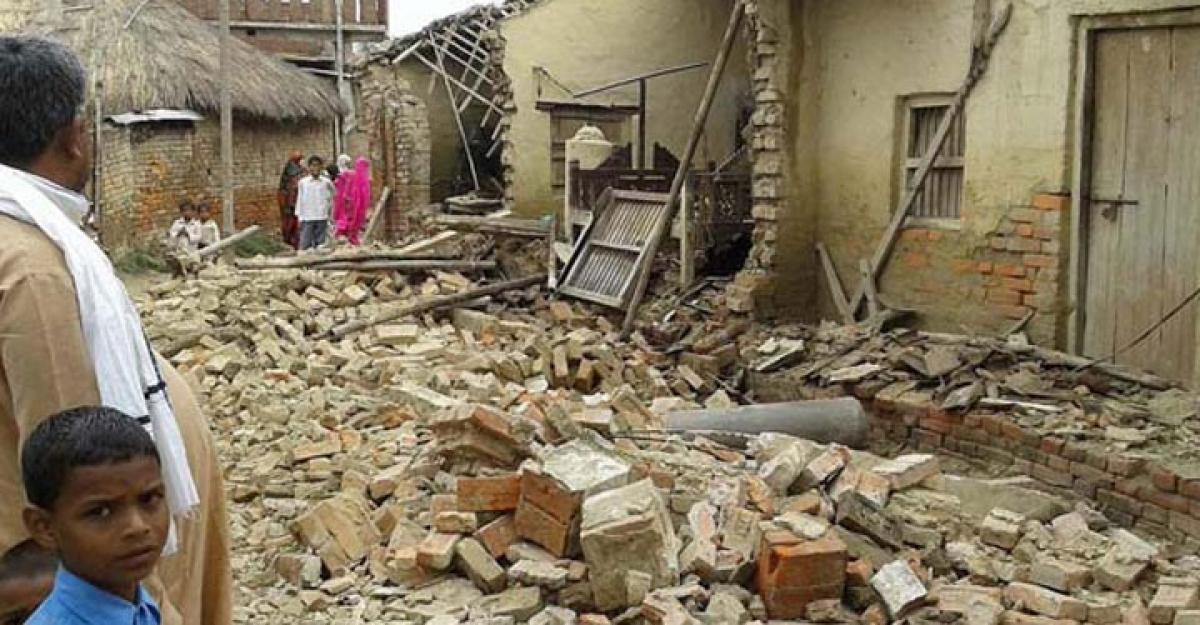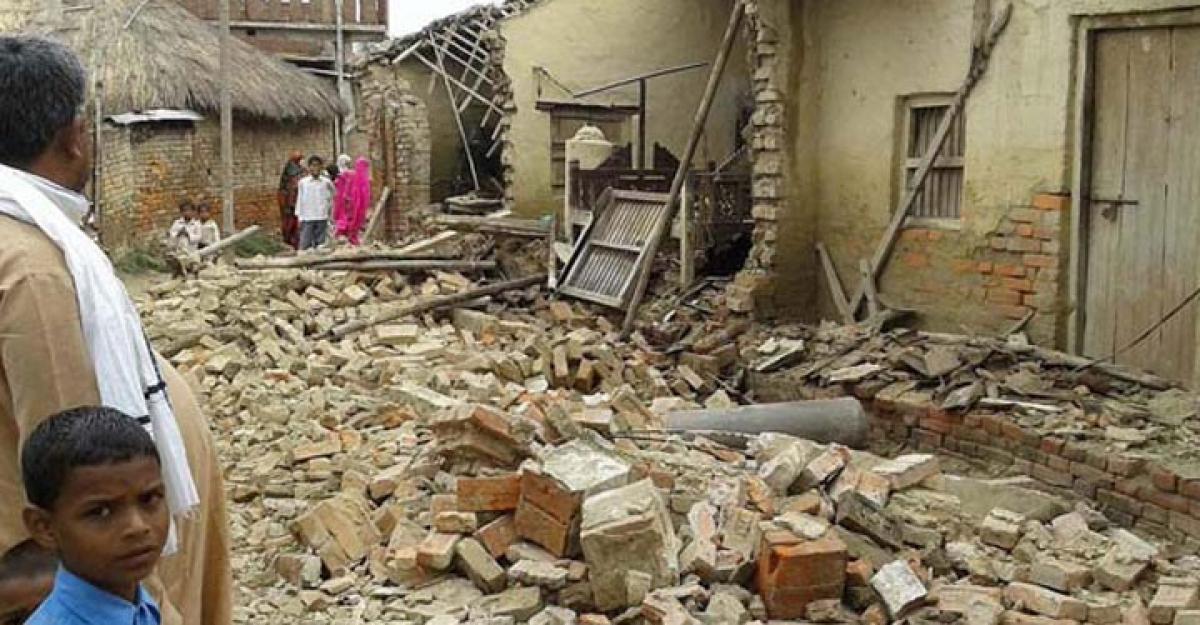Live
- ‘Mr Manikyam’ FL unveiled; promises a tale of human values
- ‘M4M’ Hindi trailer gets a grand launchat Goa IFFI
- ESA’s Proba-3 Mission Reaches Milestone with Successful Fueling, Set for December 2024 Launch
- Kejriwal tells Delhi voters to back AAP’s single-engine, shun BJP’s double-engine govt plan
- Man booked for objectionable posts on Hindu deities in Karnataka
- 'Own interpretation developed': SC trashes pleas challenging insertion of 'Socialist', 'Secular' in Preamble to Constitution
- Gurugram: Three including two women held in murder case
- Afghanistan: Six killed as vehicle falls into river in Badakhshan
- Complete failure in handling the situation: Congress on Sambhal violence
- Crucial UN plastics treaty talks begin in South Korea
Just In

India is vulnerable, in varying degrees, to a large number of natural disasters, too. More than 58.6 per cent of the country’s landmass is prone to earthquakes of moderate to very high intensity; over 40 million hectares (12%) of its land is prone to floods and river erosion;

India is vulnerable, in varying degrees, to a large number of natural disasters, too. More than 58.6 per cent of the country’s landmass is prone to earthquakes of moderate to very high intensity; over 40 million hectares (12%) of its land is prone to floods and river erosion; close to 5,700 km out of the 7,516 km-long coastline is prone to cyclones and tsunamis; 68% of its cultivable area is vulnerable to droughts, estimates the National Disaster Management Authority (NDMA).
The earthquake risk in India is increasing. Increasing population and extensive unscientific constructions mushrooming all over, including multistoried luxury apartments, huge factory buildings, gigantic malls, supermarkets as well as warehouses and masonry buildings keep India at high risk.
Increase in earthquake risk is also due to a spurt in developmental activities driven by urbanisation, economic development and the globalisation of India’s economy. The increase in use of high-technology equipment and tools in manufacturing and service industries has also made them susceptible to disruption due to relatively moderate ground shaking.
As a result, loss of human life is not the only determinant of earthquake risk any more. Severe economic losses leading to the collapse of the local or regional economy after an earthquake may have long-term adverse consequences for the entire country.
But, the nation’s march for development cannot stop. The only way out is to be prepared for disasters. There has been a paradigm shift in the approach to disaster management in India. This approach emphasises on prevention and preparedness. Natural disasters like earthquakes are beyond the human capacity to predict and prevent.
As suggested by the Indian Institute of Technology, Kharagpur, which conducts the earthquake vulnerability studies in India, the hazard zoning in the country needs to be re-examined and that the boundaries of zoning areas revised. The efforts to develop microzonation have to intensify so that anticipated damage due to earthquakes is better predicted and necessary measures taken.
In fact, earthquakes don’t kill, buildings do. A survey by the National Disaster Management Authority (NDMA) has found that in the last 25 years, more than 25,000 human fatalities were caused primarily by collapse of buildings during earthquakes.
The Center for Science and Environment (CSE) points out that there are serious lapses in building regulations in India. The condition and quality of Indian building stock is poor when it comes to seismic performance. Earth quakes release devastating energy.
Experts suggest that a magnitude of 6 earthquake is something like the Hiroshima atom bomb. As noted seismologist Harsh Gupta said in an interview to Down To Earth, our knowledge about earthquakes is still limited. There is a concentrated global effort to better understand earthquakes. Bridging gaps in scientific knowledge of these disasters is crucial.
Massive awareness drive is needed to educate people on how to be prepared for such a disaster. Necessary training should be imparted to public administration to face any such eventuality. India has miles to go in disaster preparedness. The business as usual approach should go.

© 2024 Hyderabad Media House Limited/The Hans India. All rights reserved. Powered by hocalwire.com







